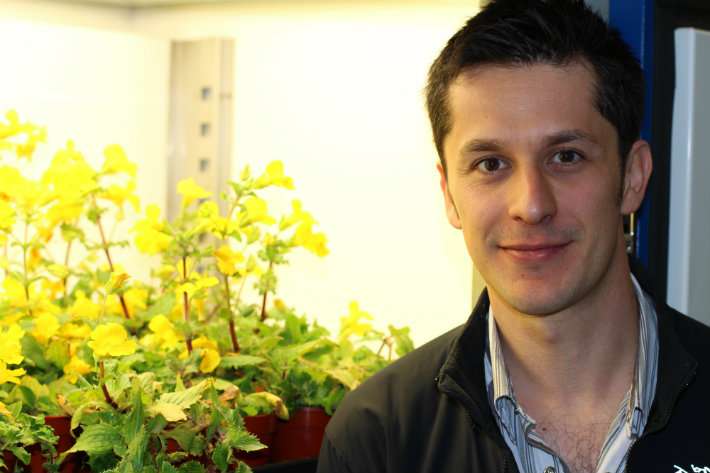Bees are born with the ability to collect pollen by buzzing—but practice makes perfect

At a time when the need to understand how declining bee populations influence the environment has never been more urgent, University of Stirling scientists have discovered that wild bumblebees are born with the ability to remove pollen from nectarless flowers using high-frequency vibrations.
The study, published in the Journal of Insect Behavior, is the first to show that the ability to vibrate flowers to extract pollen is an innate behaviour in bumblebees and one that is refined over time and gives a rare insight into the complexity of the pollination services provided by these creatures.
The research was carried out by evolutionary biologist Dr Mario Vallejo-Marin of the Faculty of Natural Sciences, alongside other colleagues including former undergraduate student Tan Morgan who began the project as part of her dissertation.
Dr Mario Vallejo-Marin said: "We studied captive bumblebees from their very first exposure to flowers that need to be vibrated to extract pollen and found the creatures instinctively and almost immediately begin vibrating.
"We also found that over time and with practice, bees are able to tune down their vibrations, removing pollen while potentially saving energy. Initially bees tend to vibrate on the flower petals, but after two or three visits they focus their efforts exclusively on the part of the flower where pollen is produced. This shows the extensive capacity of these insects to learn complex motor skills to maximise their rewards from each flower they come into contact with."
Although bumblebees' ability to learn how best to collect nectar is well documented, this study is the first to show how vibrations change while foraging pollen. The study also proves that the buzz bees produce during flight and during pollen collection have clearly distinct acoustic signals.
Dr Vallejo-Marin explained: "Our research suggests that bumblebees learn to reduce the frequency of the vibration they are using during pollen extraction as they gain more experience manipulating flowers that require vibrations to release pollen.
"20,000 species of plants including major crops, such as tomatoes and potatoes, rely on vibrating bees for pollination services. What's more this function is one that only bees - and limited to certain types of bees - can fulfil. Gaining this insight into how bumblebee pollination behaviour is innate, and yet perfected through learning, is essential to comprehend the complexity of pollination services provided by bees.
"There is a sense of urgency to understand how different species of bees use specialised and complex motor skills to pollinate flowers. Only by studying how bees achieve these specialised behaviours can we can really understand the consequences of declining bee populations for natural and agricultural systems."
More information: Tan Morgan et al. Floral Sonication is an Innate Behaviour in Bumblebees that can be Fine-Tuned with Experience in Manipulating Flowers, Journal of Insect Behavior (2016). DOI: 10.1007/s10905-016-9553-5
Provided by University of Stirling




















